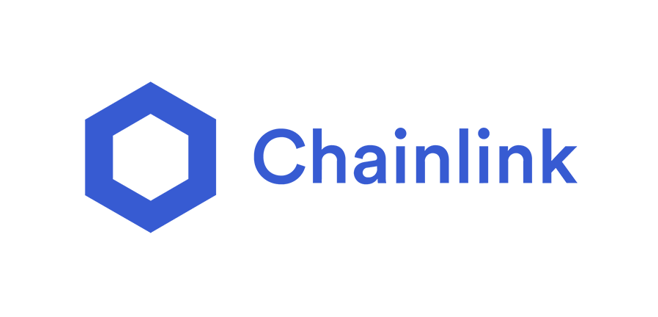Published 13 May 2024
Ratex.ai/
- Blog/
- Ethereum/
- The Future of DeFi: Exploring Wrapped Tokens and Interoperability on Ethereum
The Future of DeFi: Exploring Wrapped Tokens and Interoperability on Ethereum

Decentralized finance, or DeFi, has emerged as a transformative force in the world of finance, leveraging blockchain technology to create a more open, transparent, and accessible financial ecosystem. By eliminating intermediaries and democratizing access to financial services, DeFi has experienced rapid growth, with billions of dollars in value locked within various DeFi protocols and platforms.
As the DeFi landscape continues to evolve, two key concepts have gained significant traction: wrapped tokens and interoperability. These innovations hold the potential to unlock new opportunities, enhance user experiences, and drive the future of DeFi. In this article, we will explore the role of wrapped tokens and interoperability in shaping the DeFi ecosystem on Ethereum, the leading platform for decentralized applications and smart contracts. Understanding these concepts and their implications will provide valuable insights into the future of decentralized finance and its potential to reshape the global financial landscape.

Wrapped Tokens: Bridging the Gap Between Cryptocurrencies
Wrapped tokens have emerged as a crucial component in the DeFi ecosystem, enabling seamless interaction between different cryptocurrencies and blockchain networks. In essence, a wrapped token is a digital asset that represents another underlying asset, typically from a different blockchain. By "wrapping" the original asset, users can leverage its value within a new ecosystem, unlocking new use cases and opportunities.
Explanation of wrapped tokens and their purpose
Wrapped tokens are created by locking the original asset in a smart contract, which then issues an equivalent amount of the wrapped token on the target blockchain. This process allows users to utilize the value of the underlying asset within the new ecosystem while maintaining the security and transparency of the original blockchain. Wrapped tokens are usually backed 1:1 by the underlying asset, ensuring that the value of the wrapped token remains pegged to the original asset.
Examples of popular wrapped tokens
- Wrapped Bitcoin (WBTC)
As the most popular wrapped token, WBTC brings Bitcoin's liquidity and value to the Ethereum ecosystem. By wrapping BTC, users can participate in Ethereum-based DeFi protocols, such as lending, borrowing, and yield farming, using their Bitcoin holdings.
- Wrapped Ether (WETH)
WETH is an ERC-20 token that represents Ether (ETH) on the Ethereum blockchain. Since many DeFi protocols are built using the ERC-20 standard, WETH enables users to interact with these platforms more easily and efficiently.
- Wrapped Solana (WSOL)
WSOL is an ERC-20 token that represents Solana (SOL) on the Ethereum blockchain. By wrapping SOL, users can access Ethereum-based DeFi protocols using their Solana holdings, facilitating cross-chain interoperability and unlocking new opportunities within the DeFi ecosystem.
Benefits and use cases of wrapped tokens in the DeFi ecosystem
- Enhanced interoperability
Wrapped tokens enable users to seamlessly transfer value between different blockchain networks, facilitating interoperability and unlocking new opportunities for collaboration and innovation.
- Access to DeFi protocols
By wrapping their assets, users can access a wide range of DeFi services and platforms, allowing them to earn passive income, leverage their holdings, and engage in various investment strategies.
- Improved liquidity
Wrapped tokens contribute to deeper liquidity pools within the DeFi ecosystem, enabling more efficient price discovery and reducing slippage for traders.

Interoperability: Enabling Seamless Communication Between Blockchains
Interoperability is a critical aspect of the DeFi ecosystem, as it allows different blockchain networks to communicate and exchange value seamlessly. This feature is essential for creating a more connected and accessible financial landscape, where users can easily transfer assets and interact with various DeFi protocols across multiple blockchains.
Explanation of Interoperability and Its Significance for DeFi: Interoperability refers to the ability of different blockchain networks to share information, execute transactions, and exchange assets without the need for intermediaries. In the context of DeFi, interoperability enables users to access a wide range of financial services and platforms, regardless of the underlying blockchain. This, in turn, fosters innovation, enhances liquidity, and promotes the growth of the DeFi ecosystem.
Overview of current interoperability solutions
- Cross-chain bridges
Cross-chain bridges are solutions that enable the transfer of assets between different blockchain networks. These bridges typically involve locking assets on one chain and minting an equivalent amount of wrapped tokens on the target chain. Examples of cross-chain bridges include WBTC, RenVM, and Chainlink's Cross-Chain Interoperability Protocol (CCIP).
- Sidechains
Sidechains are separate blockchain networks that are connected to a main chain (e.g., Ethereum) through a two-way peg. This connection allows assets to be transferred between the main chain and the sidechain, enabling users to access new features or scalability improvements. Examples of sidechains include Polygon (formerly Matic Network) and SKALE.
Challenges and limitations of existing interoperability solutions
- Security
Interoperability solutions often introduce additional security risks, such as the potential for smart contract vulnerabilities or the reliance on centralized validators. Ensuring the security of these solutions is crucial for maintaining trust and protecting users' assets.
- Scalability
As the DeFi ecosystem continues to grow, interoperability solutions must be able to handle increasing transaction volumes and user demand. Scalability remains a significant challenge for many existing solutions, which can lead to network congestion and high transaction fees.
- Complexity
Implementing interoperability solutions can be technically challenging, requiring deep expertise in multiple blockchain networks and protocols. This complexity can create barriers to entry for new projects and hinder the adoption of interoperable DeFi platforms.

The Role of Ethereum in Advancing Wrapped Tokens and Interoperability
Ethereum has emerged as the leading platform for decentralized applications (dApps) and DeFi, with a significant portion of the total value locked (TVL) in DeFi protocols residing on the Ethereum blockchain. Ethereum's dominance in the DeFi space positions it well to drive innovation and development in the areas of wrapped tokens and interoperability.
Ethereum-based projects and initiatives

- Polygon (formerly Matic Network)
Polygon is a Layer 2 scaling solution and a framework for building and connecting Ethereum-compatible blockchain networks. It aims to improve interoperability and scalability by enabling the seamless transfer of assets between Ethereum and other blockchain networks.

- Chainlink
Chainlink is a decentralized oracle network that provides secure and reliable data feeds to smart contracts. Chainlink's Cross-Chain Interoperability Protocol (CCIP) is designed to facilitate the communication and transfer of assets between different blockchain networks, enhancing interoperability and enabling new use cases for DeFi.
The impact of Ethereum 2.0 on the future of wrapped tokens and interoperability
Ethereum 2.0, also known as Serenity, is a series of upgrades aimed at improving the scalability, security, and sustainability of the Ethereum network. These upgrades include the transition from a proof-of-work (PoW) consensus mechanism to a proof-of-stake (PoS) system, as well as the introduction of shard chains to distribute the network's workload.
The successful implementation of Ethereum 2.0 is expected to have a significant impact on the future of wrapped tokens and interoperability:
- Improved scalability
Ethereum 2.0's sharding solution aims to drastically increase the network's transaction processing capacity, which could help alleviate the scalability challenges faced by many interoperability solutions.
- Enhanced security
The transition to a PoS consensus mechanism is expected to make the Ethereum network more secure and resilient against attacks, which could, in turn, benefit the security of wrapped tokens and interoperability solutions.
- New opportunities
Ethereum 2.0's upgrades could pave the way for new DeFi use cases and innovations, further emphasizing the importance of wrapped tokens and interoperability in the growing DeFi ecosystem.
Ethereum's ongoing development and its dominant position in the DeFi space make it a crucial player in shaping the future of wrapped tokens and interoperability. As the ecosystem continues to evolve, Ethereum-based projects and initiatives will likely play a significant role in driving innovation and adoption.

The Future of DeFi: A More Connected and Accessible Ecosystem
The rapid growth and innovation in the DeFi space, driven in part by wrapped tokens and interoperability solutions, have the potential to transform the financial landscape significantly. As the ecosystem continues to evolve, several emerging trends and developments are shaping the future of DeFi.
- Layer-2 solutions
Layer-2 solutions, such as Optimistic Rollups and ZK-Rollups, aim to address Ethereum's scalability challenges by processing transactions off-chain and submitting them in batches to the mainnet. These solutions can significantly improve transaction throughput, reduce fees, and enhance the user experience for DeFi applications.
- Cross-chain DeFi platforms
Cross-chain DeFi platforms, like THORChain and Cosmos, are designed to facilitate seamless asset transfers and interoperability between different blockchain networks. These platforms can help unlock new use cases and opportunities for DeFi, enabling users to access a broader range of financial services and products.
- Decentralized autonomous organizations (DAOs)
DAOs are community-driven organizations that operate on blockchain networks, governed by smart contracts and token holders. As DeFi continues to grow, DAOs are expected to play an increasingly important role in the governance and decision-making processes of various DeFi projects and platforms.
Collaboration and community-driven initiatives are crucial for the growth and success of the DeFi ecosystem. By working together, projects can overcome shared challenges, drive innovation, and create a more connected and accessible financial landscape. As wrapped tokens and interoperability solutions continue to mature, they will likely play a pivotal role in shaping the future of DeFi and unlocking new opportunities for users and developers alike.

Conclusion
Wrapped tokens and interoperability solutions are essential components in the rapidly evolving world of decentralized finance. They enable seamless communication between blockchains, unlock new use cases, and foster innovation in the DeFi ecosystem. As more projects focus on improving interoperability and creating user-friendly wrapped tokens, the DeFi landscape is poised for significant growth and transformation.
We encourage users to explore the DeFi ecosystem, experiment with various wrapped tokens and interoperability solutions, and engage with the growing community of developers, enthusiasts, and investors. By staying informed about the latest developments in wrapped tokens, interoperability, and the broader DeFi space, you can better understand the potential impact of these innovations on the future of finance and how they may reshape traditional financial systems.
Read More




 Get RateX Pro
Get RateX Pro
 20 Apr 2024
20 Apr 2024
